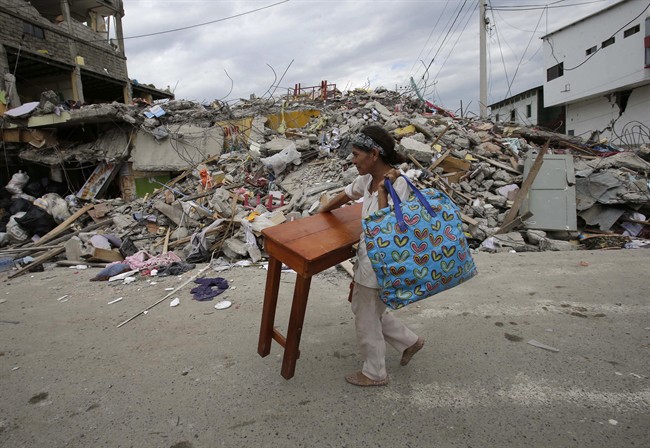On Sunday, a magnitude-7.8 earthquake killed 350 people and injured hundreds in Ecuador. On Thursday , a magnitude-6.2 earthquake rattled Japan’s Kyushu island, followed by a magnitude-7.0 on Saturday, killing at least 42 people. Both countries have seen significant aftershocks.

READ MORE: Mother and son from Quebec killed in Ecuador earthquake
While it may seem like there has been an increase in earthquake activity — in particular, powerful earthquakes — that’s not necessarily the case.
“As far as the grand scheme of things, there isn’t an increase in earthquakes are concerned,” said Julie Dutton, a geophysicist with the U.S. Geological Survey.
WATCH: Powerful earthquakes rattle Japan, Ecuador
“Sometimes with the much larger earthquakes like these, it can trigger some local or even distant effects, where it may increase some amount of background noise, as far as earthquakes,” Dutton said. “They could be unrelated to rupture zone, but put stresses in the general region that weren’t there before.”
READ MORE: Understanding earthquakes: How and why they happen
“It just happened to be large earthquakes that were in the same time frame,” Dutton said.
So while a major earthquake could put stress on other tectonic plates nearby, possibly triggering smaller quakes in other sensitive areas, for one to cause another major earthquake on the other side of the world is “unreasonable,” she said.
Japan is well-known for its seismic activity. Located in the Pacific “Ring of Fire,” an area bordering the Pacific Ocean where several tectonic plates move, Japan can experience an earthquake every day.
Ecuador sits on the Nazca plate which is sliding beneath another plate, the South American. As it does this, stress builds, which eventually is released in the form of an earthquake.






Comments